Cartilage and Bone
Objective 7.8
7.8.1 Characterize, and give examples of supporting connective tissue: cartilage and bone.
Cartilage is a connective tissue that is harder and less flexible than dense connective tissues. The cells found in cartilage are called chondrocytes. This cell looks like a fried egg through the microscope. The cells live in little lakes called lacunae. The root for cartilage is chondros, which is a Greek word that means “grainy”. This is due to the appearance of the ground substance. The distinctive grainy appearance is due to polysaccharides called chondroitin sulfate. These bind to the ground substance to form proteoglycans (proteins with many carbohydrates attached). Perichondrium, a layer of dense irregular connective tissue, surrounds the cartilage.
Clinical Connection
You may have heard of a clinical use of chondroitin sulfate, which is sold as a dietary supplement. It is used to treat osteoarthritis (deterioration of a joint) and cataracts of the eye and can be taken by mouth, applied directly to the skin, or given as a shot. There is some scientific evidence for a slight benefit from oral glucosamine and chondroitin sulfate (https://www. cochrane.org/CD005614/MUSKEL_chondroitin-osteoarthritis). There appears to be a great deal of variability between patients in the progression of osteoarthritis, from no benefit to moderate benefit. Since there is very little risk or cost to these supplements, they are probably worth the benefit some people get from these supplements.
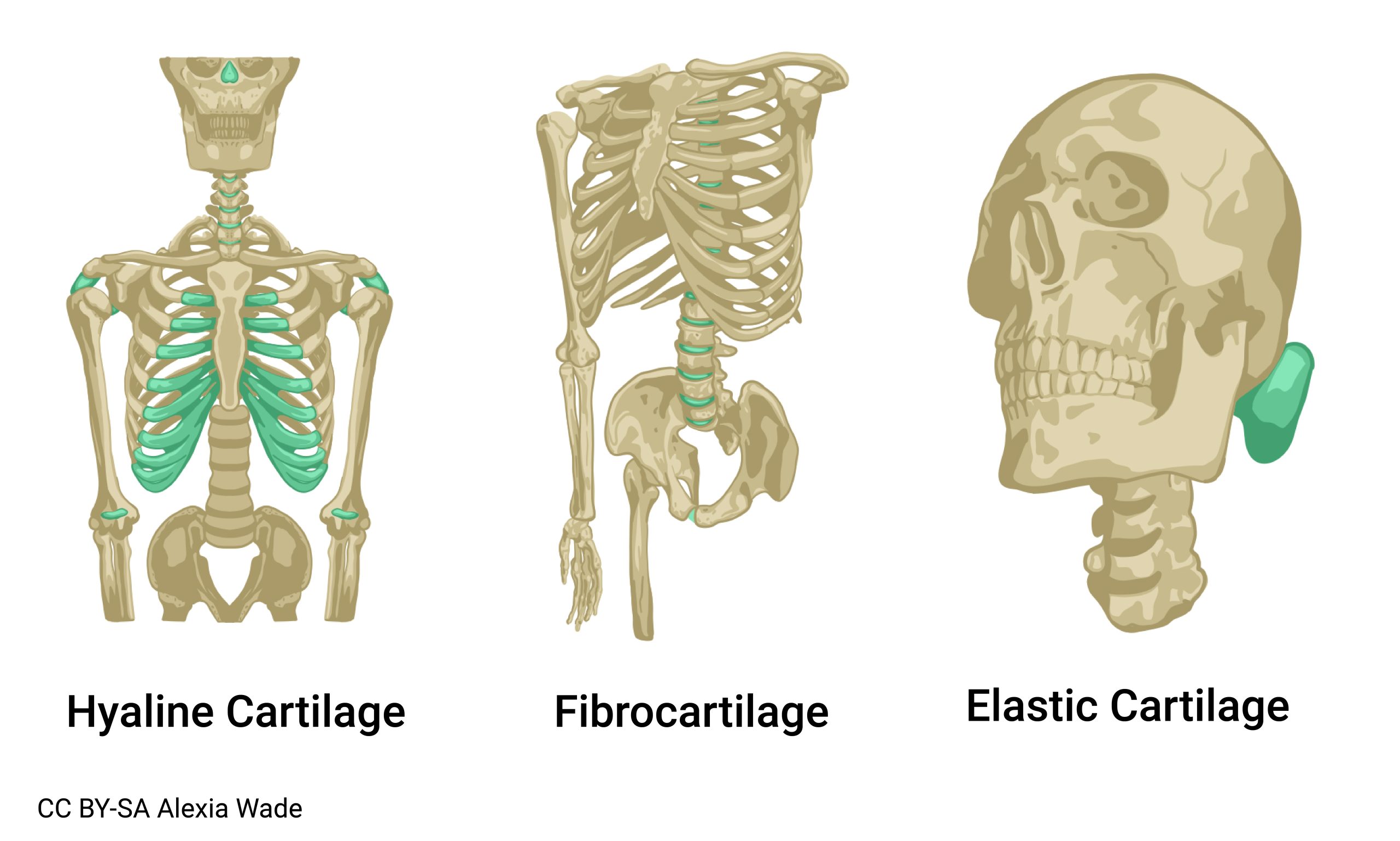
There are three cartilage types:
- Hyaline
- Fibrocartilage
- Elastic cartilage
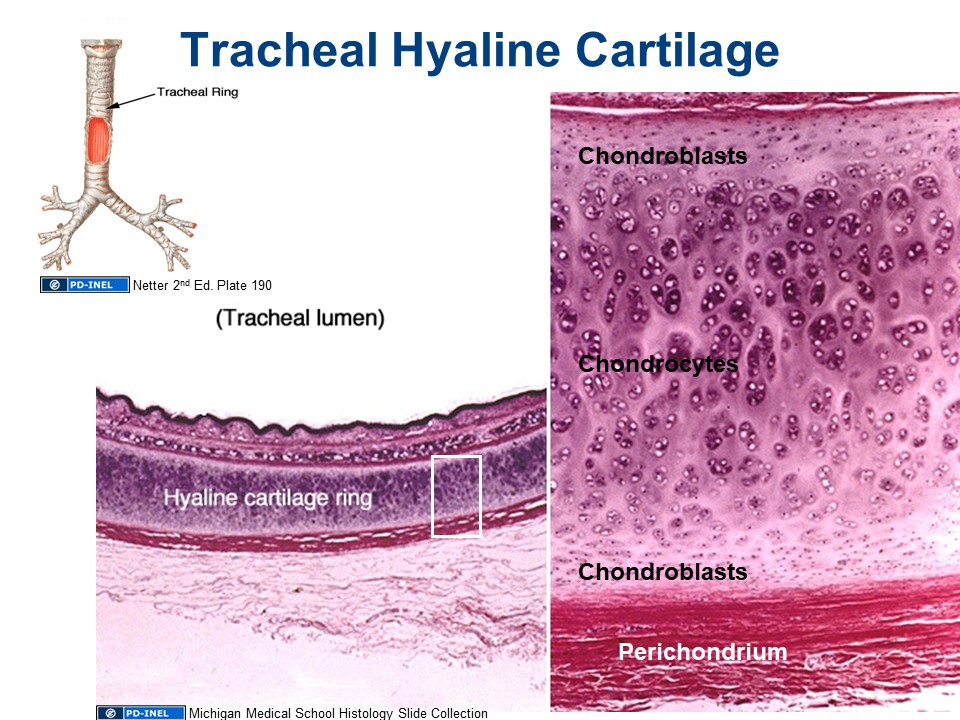
Hyaline cartilage is the most abundant type of cartilage. It‘s a shiny, bluish-white substance that consists of fine collagen fibers and many chondrocytes. The Greek word hualos means “glass” which is apt given the gross appearance of this type of cartilage. Hyaline cartilage is found at the ends of bones where they articulate (come together to form a joint). It’s also found at the ends of the ribs and in the trachea and bronchi.
The name fibrocartilage is a hint that this type of cartilage has a more fibrous appearance. The collagen fibers here are coarser and gathered together into thick bundles. This type of cartilage is found in the pubic symphysis (where the bones of the pelvis are joined), in the discs between vertebrae, in the padding of the knees (menisci), and where a tendon inserts into cartilage.
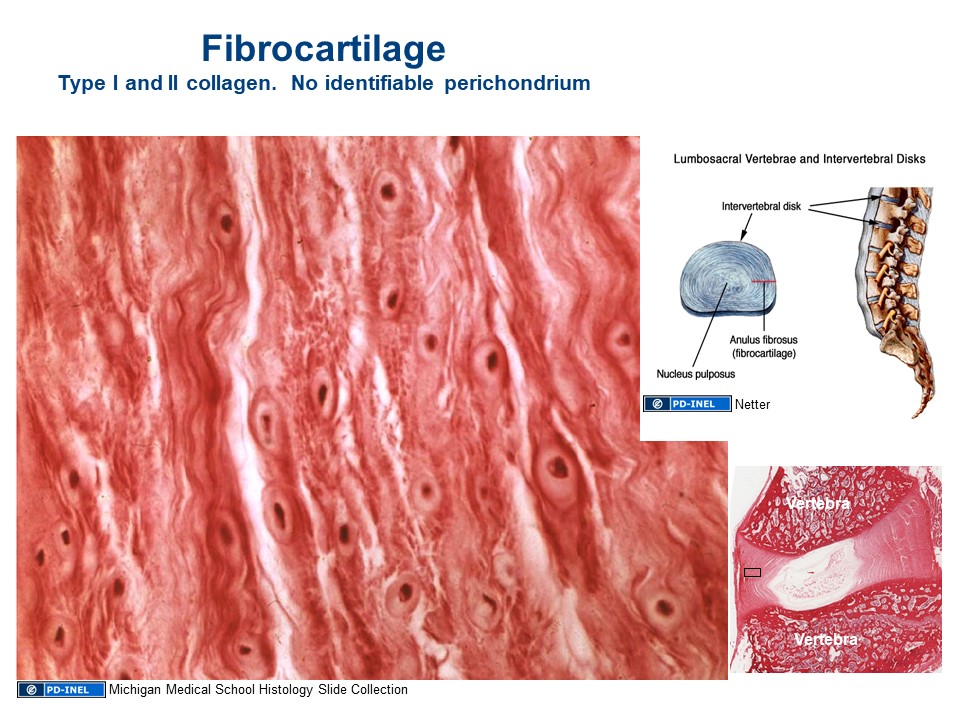
The fibrous yet strong nature of the pubic symphysis makes childbirth possible. The space between the two halves of the pelvic bone enlarges just enough to permit the baby‘s head to pass.
Elastic cartilage makes up the flap that sorts out liquid from air in the throat (epiglottis), in the external ear, and in the tubes that connect the ear to the mouth that “pop” when pressure changes (auditory tubes or Eustachian tubes). It is made up of a meshwork of elastic fibers surrounding the chondrocytes.
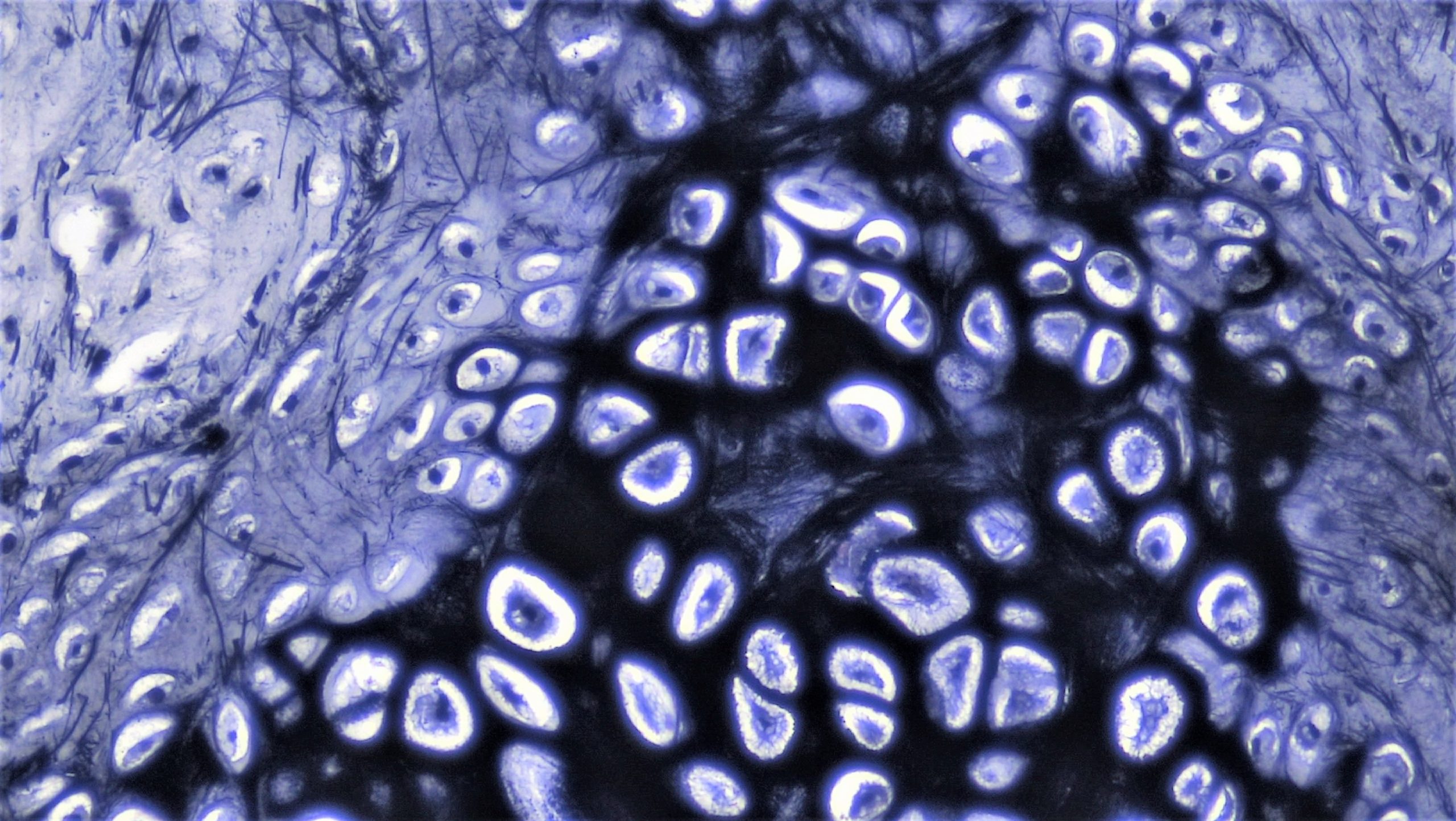
Bone will get its own unit later in the course, when we focus on the skeleton as an organ. For now, we need to know that there are two types of bone: compact and spongy.
The cells of bone are called osteocytes, which means, naturally enough, “bone cells”. (Osteo – means “bone”.) Compact bone has a complex and regular structure consisting of osteons as the basic functional and anatomical unit. The bulk of bone is nature‘s first composite material: a mixture of inorganic (hydroxyapatite, a mineral) and organic (collagen) components.
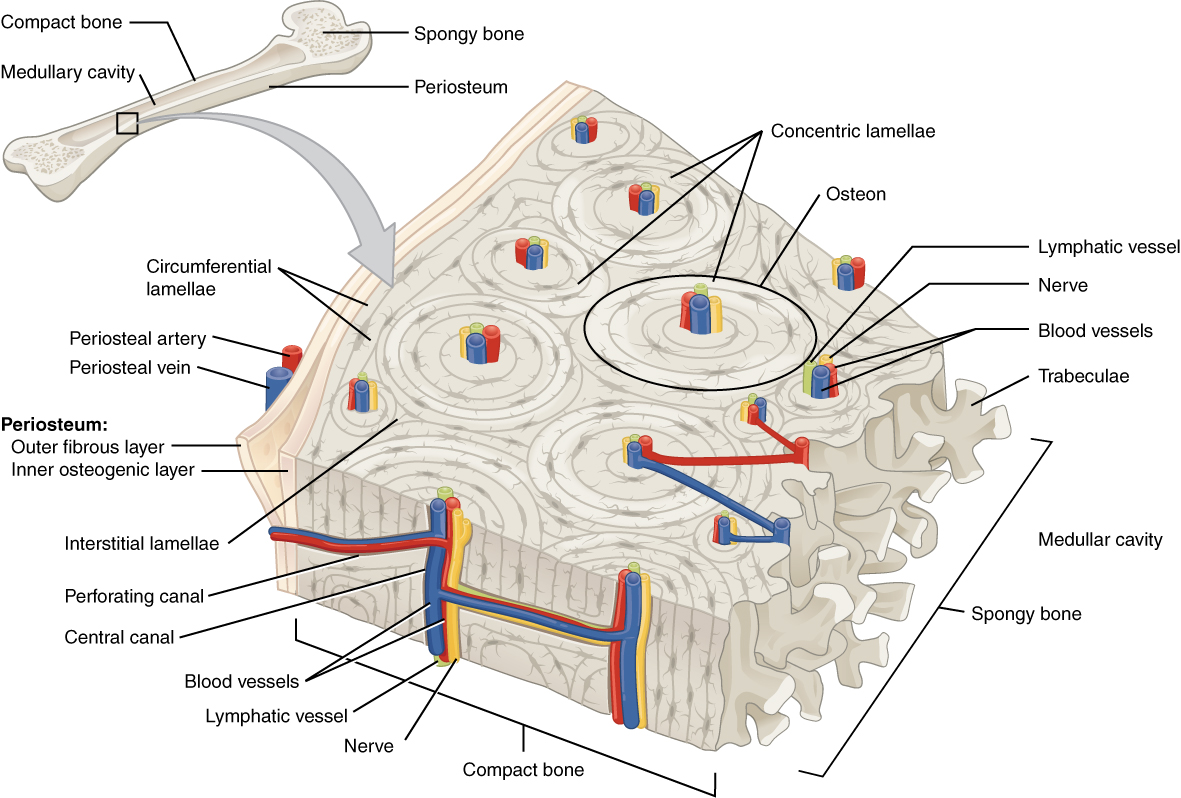
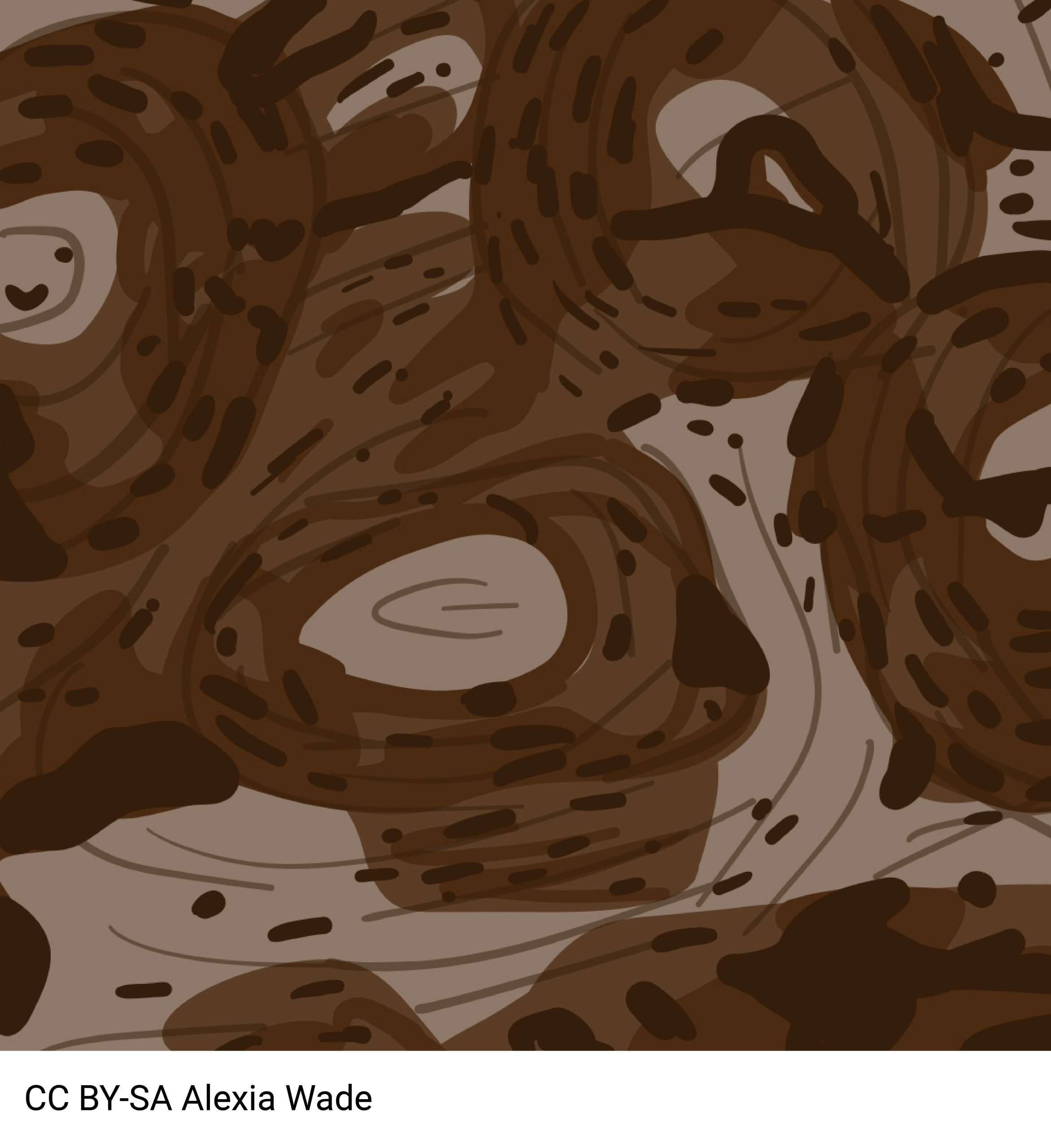
Spongy bone has a much more irregular structure. Spikes of mineralized tissue have ample space between for bone marrow.
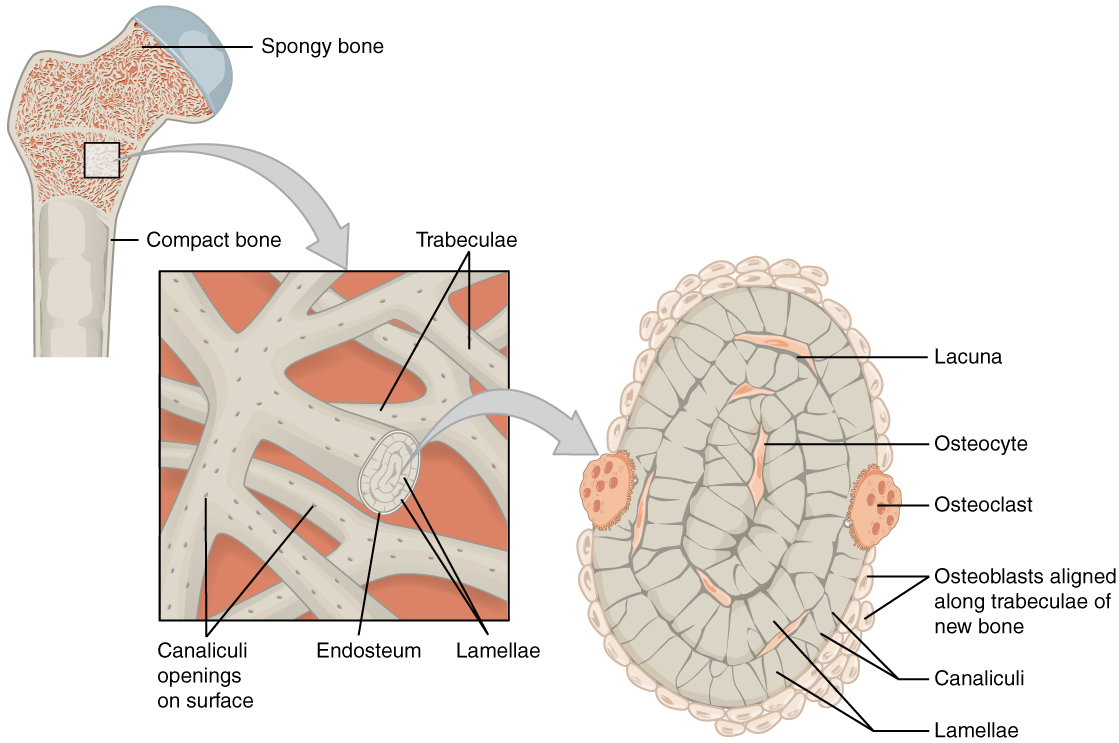
Media Attributions
- U07-057 types of cartilage © Wade, Alexia is licensed under a CC BY-SA (Attribution ShareAlike) license
- U07-054 hyalinecartilage_UOM © University of Michigan is licensed under a Public Domain license
- U07-055 fibrocartilage © University of Michigan is licensed under a Public Domain license
- U07-056 Connective_Tissue_Elastic_Cartilage_(41855667991) © Berkshire Community College Bioscience Image Library is licensed under a Public Domain license
- U07-058 Compact_Bone © Betts, J. Gordon; Young, Kelly A.; Wise, James A.; Johnson, Eddie; Poe, Brandon; Kruse, Dean H. Korol, Oksana; Johnson, Jody E.; Womble, Mark & DeSaix, Peter is licensed under a CC BY (Attribution) license
- U07-059 bone © Wade, Alexia is licensed under a CC BY-SA (Attribution ShareAlike) license
- U07-060 Spongy_Bone © Betts, J. Gordon; Young, Kelly A.; Wise, James A.; Johnson, Eddie; Poe, Brandon; Kruse, Dean H. Korol, Oksana; Johnson, Jody E.; Womble, Mark & DeSaix, Peter is licensed under a CC BY (Attribution) license

